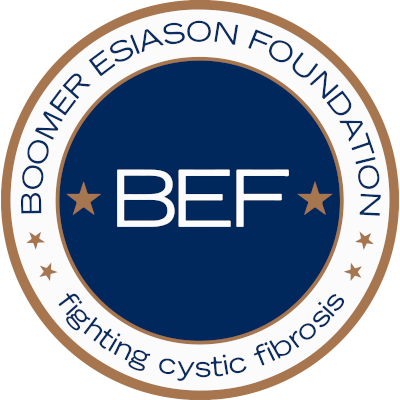Outrunning Cystic Fibrosis
Source: Everyday Health
On an unseasonably cool Saturday in July, Jerry Cahill crossed the finish line of the Boomer’s Cystic Fibrosis Run to Breathe, a 10K in New York City’s Central Park. Beside him ran Joshua Sonett, MD, a surgeon who just three months earlier had replaced Cahill’s deteriorating lungs with a healthy pair.
Three months.
“There are some patients that would just be getting out of the hospital at three months [after a lung transplant], so it’s a testament to his work and effort,” says Dr. Sonett, Cahill’s longtime physician.
Cahill’s determination started in childhood, in Brooklyn, N.Y. When doctors diagnosed him with cystic fibrosis at age 11, they told his parents he’d be lucky to reach his 18th birthday.
“Back then, they said, ‘Just keep your son quiet and comfortable back home,’ but my father was very athletic and so were my three older brothers. And he thought, ‘Well, if Jerry’s not going to be around this long, I want him to be with his brothers and stay active,'” says Cahill.
Running, Breathing, Living
So, active he stayed. Cahill played sports, such as basketball (which he loved) and football (which he didn’t) with his older brothers. His baseball career ended swiftly, with a ball to the eye. In high school he gravitated toward track and field, “where no one gets cut,” he says, and excelled in pole vaulting. And in June, Cahill turned 56. His father didn’t know it at the time, but making sports a part of Cahill’s life would end up delaying the effects of cystic fibrosis on his body.
“I’ve known Jerry for 10 years, and because he was able to exercise and maximize his body, he’s delayed it and delayed it and pushed off the ravages of cystic fibrosis and got to where he is today,” Sonett says.
Exercising, specifically running, helped Cahill clear his lungs, something cystic fibrosis patients have to do at least four times a day. Cystic fibrosis is a genetic condition that prevents the body from clearing secretions, causing mucus to build up in the lungs. “Where we [healthy individuals] breathe and cough easily, and get up secretions that we don’t think about, a cystic fibrosis patient on a regular basis has to try to clean their lungs,” Sonett says. Often they need chest physical therapy to work out the mucus.
Cahill delayed needing a lung transplant until he couldn’t wait any longer. Two years ago, doctors wanted to activate him on the transplant list, but he asked them to wait. He started exercising more, and although it wasn’t easy, his condition actually improved. Then, about a year ago, doctors told him it was time. Still, Cahill jogged (with an oxygen tank) up to the day in April he received the call that they had found a match. By then, his lung function had dropped to 23 percent.
‘You Cannot Fail’
“I think the lungs are too big,” Cahill told Dr. Sonett immediately upon waking up from surgery nearly 48 hours later. “I think you stuffed them in there.” But the lungs fit Cahill fine. He’d just never known the feeling of breathing at full force. “When things decline gradually you get used to it,” he says. “Even right before the transplant, I never really thought I was that sick. I must have been a lot sicker.”
Jerry’s body still has cystic fibrosis, Sonett says. But his lungs, which have different DNA and genetics than him, will never have it. With Cahill’s lungs in top shape, right now his biggest challenge is getting his body to catch up.
A little more than a week post-transplant, Cahill started walking again. About a month later, after signing up for the Run to Breathe 10K, he tried a half walk-half jog — or plodding, as his calls it. Now he runs, cycles, and looks forward to lifting weights again. He updates his Facebook friends, many of whom are members of the cystic fibrosis community, on his athletic progress. “Seeing is believing,” he says. “It’s different from your doctor telling you that you need to exercise.”
For Cahill, nebulizers, bronchodilators, airway clearance, and pills were a way of life. But they neverdefined his life. “Cystic fibrosis, it really wasn’t my life. It wasn’t about the disease at all,” he says. His parents, Mary and Edward, instilled that in him.
“I would get sick with cystic fibrosis, and they would say don’t worry, you’ll get through this, you cannot fail. It was just something that stuck in the back of my mind. And whenever I got sick, and not even just sick, but other issues in life, whether it was a job situation, it was, don’t worry, you’ll get through it, you cannot fail,” he says.
Cahill passes on that message by volunteering with the Boomer Esiason Foundation, an organization dedicated to finding a cure for cystic fibrosis, and coaching pole vaulting at Iona Prep High School in New Rochelle, N.Y. The mantra he grew up with appeals to everyone from cystic fibrosis patients to healthy high school athletes: “Everybody has things in life they have to overcome, and you just have to believe you cannot fail.”
That mantra was part of Cahill’s motivation to sign up for the Run to Breathe 10K so soon after his transplant. He did it in celebration of his donor and in thanks to his donor’s family — even though he had no idea how long it would take him to cross the finish line.
“I’m gonna do it. I’m gonna show up and walk it if I have to,” he said to himself. “I don’t care if they close down the course.”
By the way, he finished the race in an hour and a half, beating last year’s time by 30 seconds.
